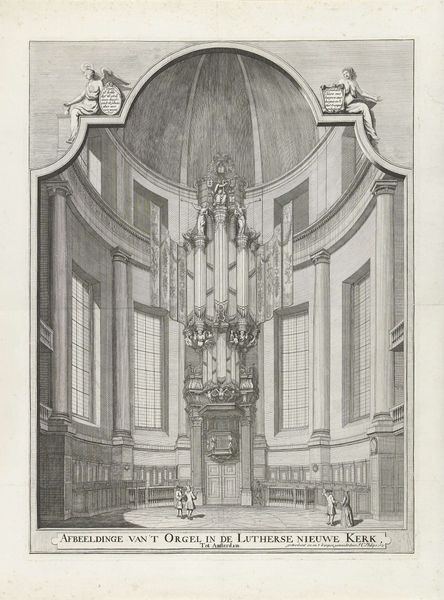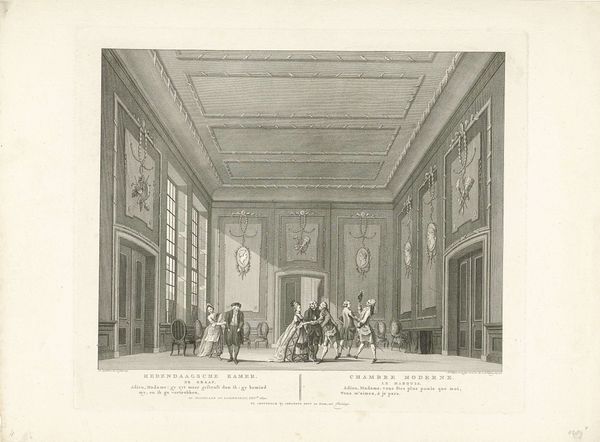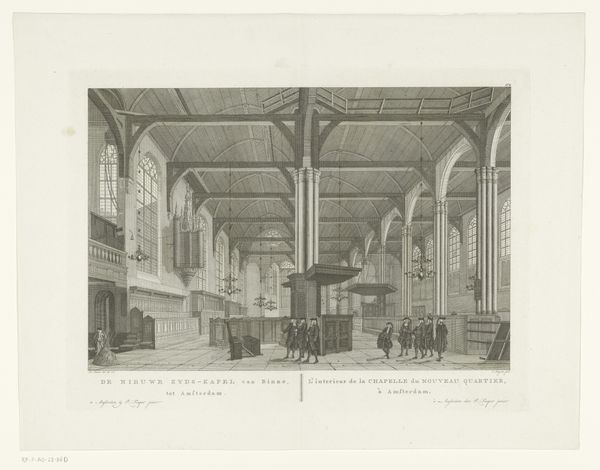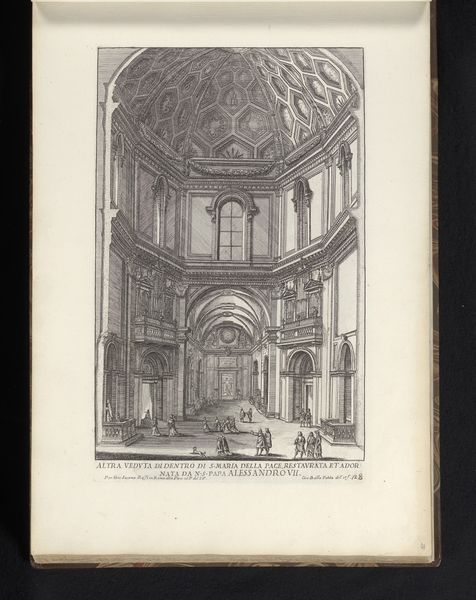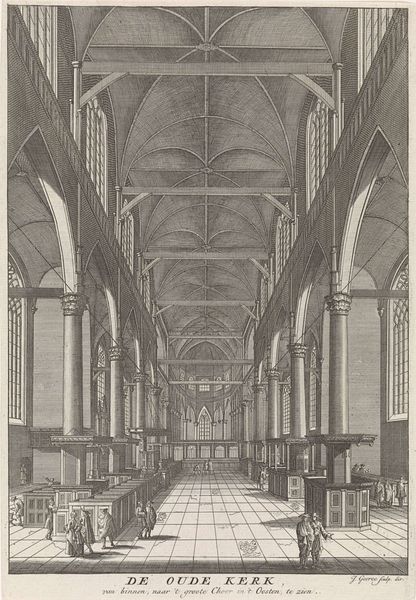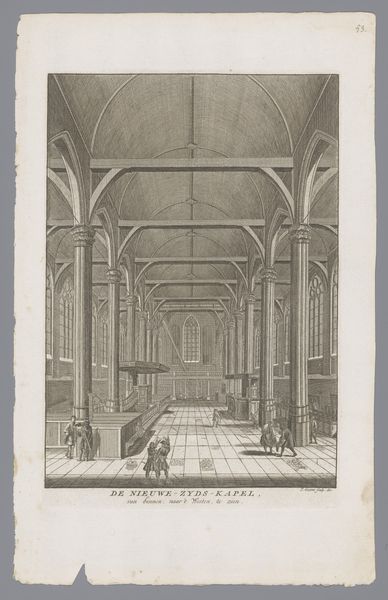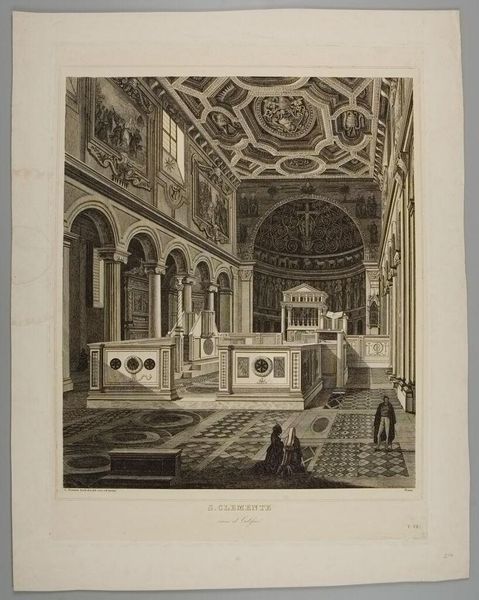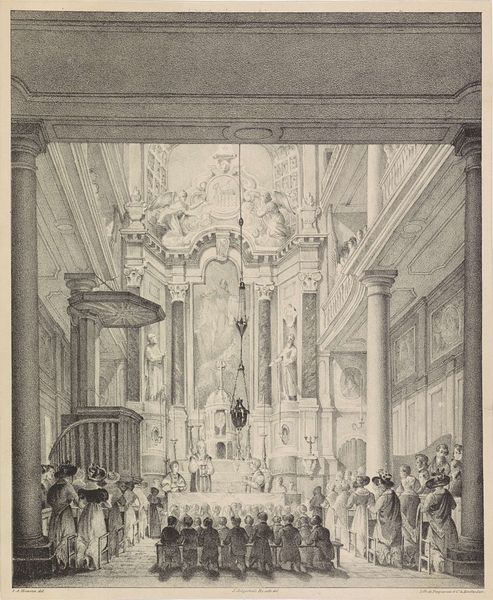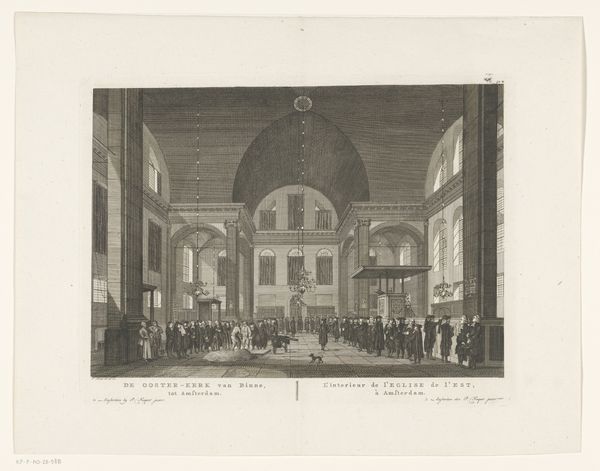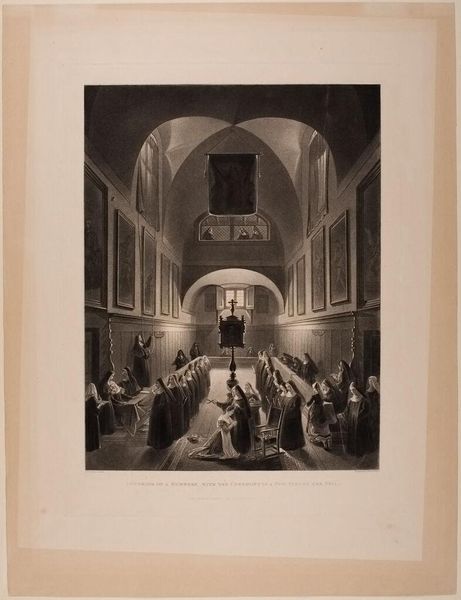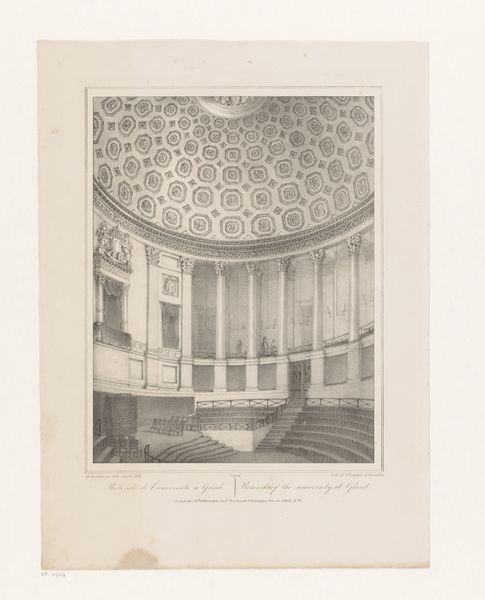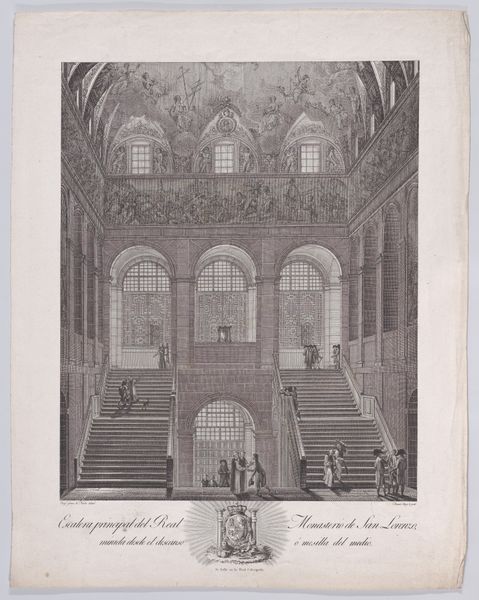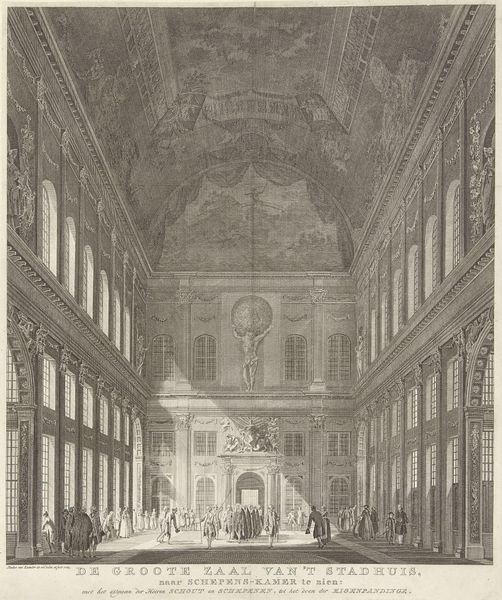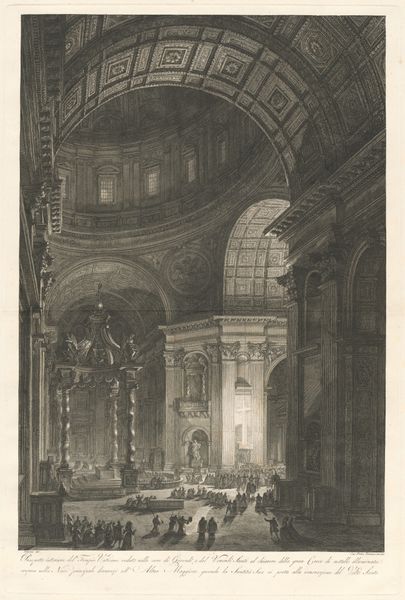
Interieur van de Nieuwe Lutherse Kerk te Amsterdam, voor de brand van 1822 Possibly 1823
0:00
0:00
Dimensions: height 361 mm, width 292 mm
Copyright: Rijks Museum: Open Domain
Curator: Immediately, I'm struck by the sheer verticality, that seemingly endless dome. It projects a rather intimidating sense of authority, wouldn't you say? Editor: Indeed. We're looking at "Interieur van de Nieuwe Lutherse Kerk te Amsterdam, voor de brand van 1822" which translates to "Interior of the New Lutheran Church in Amsterdam, before the fire of 1822." The artwork, which some historians speculate was completed around 1823, is an engraving attributed to A. Lutz, providing a view inside the Baroque church. What narratives do you think this space evokes? Curator: Given its Baroque roots and its place within Amsterdam's urban landscape, the architecture signifies more than just spiritual devotion; it broadcasts Amsterdam's political and economic power in that era. The grandeur of the space becomes an emblem of dominance. Note also how people within this architecture, even though they seem bourgeois, appear as merely specks inside it. The composition inherently dictates hierarchies of power. Editor: Yes, but the execution fascinates me from a formalist perspective. Note the clever employment of perspective and light to render the spatial depth. Also notice how, within a mostly monochromatic range, the lines vary between thin, precise outlines to suggest far away details to heavier lines denoting nearness. Through its intricate, almost photographic detail, the composition creates a hyper realistic interior that feels like we are stepping back in time. Curator: I can agree to that, yet how does such detail serve social functions? Lutz, the engraver, chose a historical scene shortly before a major disruption. This print functions not just as architectural record-keeping but perhaps also embodies themes of loss and change, mirroring wider insecurities and social unrest brewing at the time. Who might be the patrons and what sort of stories were people expected to exchange or reflect on while admiring the church's interiors displayed here? Editor: Fascinating to ponder. This piece also speaks volumes about artistic practice. Through its masterful composition, which highlights line, light and shadow, "Interior of the New Lutheran Church" acts as both visual representation and emotional experience. Its geometry can stand apart from any discussion of the building and the communities inside it. Curator: Perhaps in the end both understandings deepen each other. This church, rendered with so much care, gives visual form to Amsterdam’s transformations—before destruction befell it. Editor: And Lutz’s treatment invites all, whether history-attuned activists or geometry-infatuated formalists like me, into deeper seeing, even thinking.
Comments
No comments
Be the first to comment and join the conversation on the ultimate creative platform.
